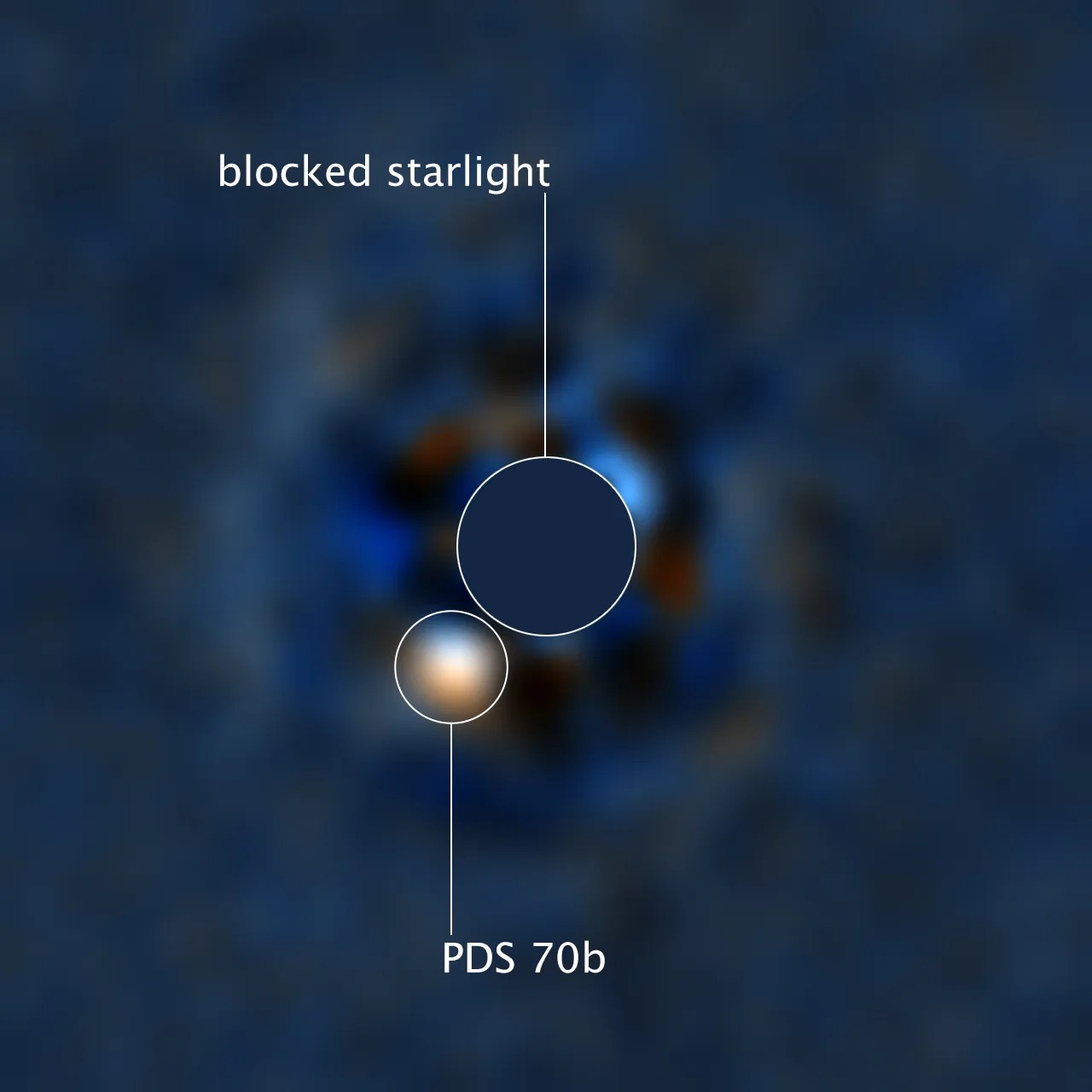
Hubble Exoplanet PDS 70b
Hubble’s sensitivity to ultraviolet light reveals radiation from super-heated gas falling onto a world called PDS 70b. The glare of the star was blocked, allowing Hubble to directly observe PDS 70b accumulating mass. Located some 370 light-years from Earth, the planet is about five times the mass of Jupiter and growing at a snail’s pace. Researchers found that the planet is growing so slowly that if the rate remains steady for another million years, its bulk will increase by only about 1/100th of Jupiter’s mass
Credits: NASA, ESA, and Y. Zhou (McDonald Observatory/University of Texas)
Image CreditNASA, ESA, and Y. Zhou (McDonald Observatory/University of Texas)
Size640x640px
